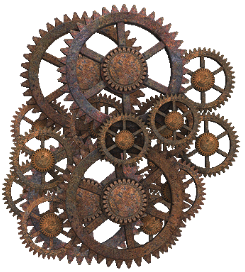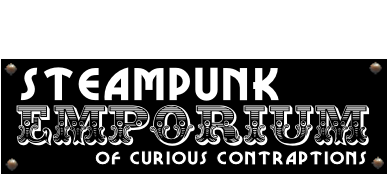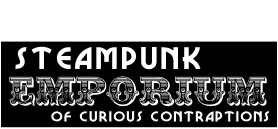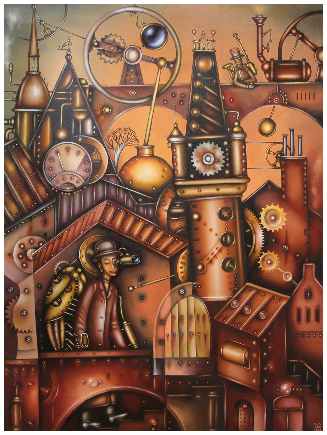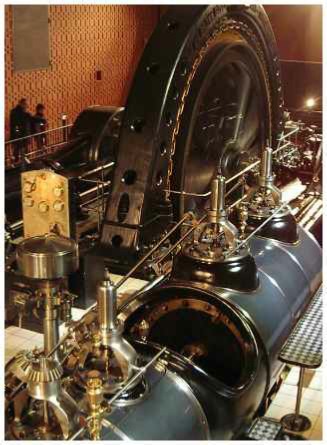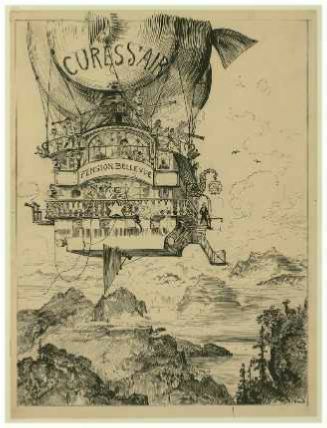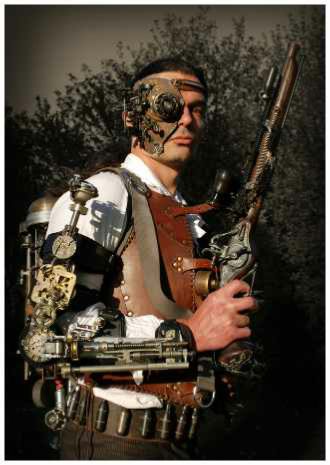What Is Steam Punk
Steampunk is a subgenre of science fiction and sometimes fantasy that incorporates technology and aesthetic designs inspired by 19th-century industrial steam-powered machinery. Although its literary origins are sometimes associated with the cyberpunk genre, steampunk works are often set in an alternative history of the 19th century's British Victorian era or American "Wild West", in a post-apocalyptic future during which steam power has maintained mainstream usage, or in a fantasy world that similarly employs steam power. Steampunk may, therefore, be described as neo-Victorian. Steampunk perhaps most recognisably features anachronistic technologies or retro-futuristic inventions as people in the 19th century might have envisioned them, and is likewise rooted in the era's perspective on fashion, culture, architectural style, and art. Such technology may include fictional machines like those found in the works of H. G. Wells and Jules Verne, or the modern authors Philip Pullman, Scott Westerfeld, Stephen Hunt and China Miéville. Other examples of steampunk contain alternative history-style presentations of such technology as lighter-than-air airships, analogue computers, or such digital mechanical computers as Charles Babbage's Analytical Engine.
Steampunk may also incorporate additional elements from the genres of fantasy, horror, historical fiction, alternate history, or other branches of speculative fiction, making it often a hybrid genre. The term steampunk's first known appearance was in 1987, though it now retroactively refers to many works of fiction created even as far back as the 1950s or 1960s.
Steampunk also refers to any of the artistic styles, clothing fashions, or subcultures, that have developed from the aesthetics of steampunk fiction, Victorian-era fiction, art nouveau design, and films from the mid-20th century. Various modern utilitarian objects have been modded by individual artisans into a pseudo-Victorian mechanical "steampunk" style, and a number of visual and musical artists have been described as steampunk.
Precursors to SteamPunk
Steampunk is influenced by and often adopts the style of the 19th-century scientific romances of Jules Verne, H.G. Wells, and Mary Shelley. Several works of art and fiction significant to the development of the genre were produced before the genre had a name. Titus Alone (1959), by Mervyn Peake, anticipated many of the tropes of steampunk, and the film Brazil (1985) was an important early cinematic influence toward creating the genre.Th Adventures of Luther Arkwright was an early (c1975) comic version of the Moorcock-style mover between timestreams.
In fine art, Remedios Varo's paintings combine elements of Victorian dress, fantasy, and technofantasy imagery. In television, one of the earliest mainstream manifestations of the steampunk ethos was the original CBS television series The Wild Wild West (1965–69), which inspired the film Wild Wild West (1999). In print, the A Nomad of the Time Streams trilogy by Michael Moorcock, which began in 1971 with The Warlord of the Air, was also an influential precursor.
Origin of the term SteamPunk
Although many works now considered seminal to the genre were published in the 1960s and 1970s, the term steampunk originated in the late 1980s as a tongue-in-cheek variant of cyberpunk. It was coined by science fiction author K. W. Jeter, who was trying to find a general term for works by Tim Powers (The Anubis Gates, 1983); James Blaylock (Homunculus, 1986); and himself (Morlock Night, 1979, and Infernal Devices, 1987)—all of which took place in a 19th-century (usually Victorian) setting and imitated conventions of such actual Victorian speculative fiction as H. G. Wells' The Time Machine
Modern SteamPunk
While Jeter's Morlock Night and Infernal Devices, Powers' The Anubis Gates, and Blaylock's Lord Kelvin's Machine were the first novels to which Jeter's neologism would be applied, the three authors gave the term little thought at the time.[12] They were far from the first modern science fiction writers to speculate on the development of steam-based technology or alternative histories. Keith Laumer's Worlds of the Imperium (1962) and Ronald W. Clark's Queen Victoria's Bomb (1967) apply modern speculation to past-age technology and society.[13] Michael Moorcock's Warlord of the Air (1971)[14] is another early example. Harry Harrison's novel A Transatlantic Tunnel, Hurrah! (1973) portrays a British Empire of an alternative year 1973, full of atomic locomotives, coal-powered flying boats, ornate submarines, and Victorian dialogue. The Adventures of Luther Arkwright (mid 70s) was the first steampunk comic. In February 1980 Richard A. Lupoff and Steve Stiles published the first "chapter" of their 10-part comic strip The Adventures of Professor Thintwhistle and His Incredible Aether Flyer.
The first use of the word in a title was in Paul Di Filippo's 1995 Steampunk Trilogy, consisting of three short novels: "Victoria", "Hottentots", and "Walt and Emily", which, respectively, imagine the replacement of Queen Victoria by a human/newt clone, an invasion of Massachusetts by Lovecraftian monsters, and a love affair between Walt Whitman and Emily Dickinson.
SteamPunk’s relationship to retrofuturism
Superficially, steampunk may resemble retrofuturism. Indeed, both sensibilities recall "the older but still modern eras in which technological change seemed to anticipate a better world, one remembered as relatively innocent of industrial decline." But, where retrofuturism is primarily backward looking and relies on stylistic pastiche, steampunk embraces a broader lifestyle and creative vision.
One of steampunk’s most significant contributions is the way in which it mixes the digital with the handmade. As scholars Rachel Bowser and Brian Croxall put it, "the tinkering and tinker-able technologies within steampunk invite us to roll up our sleeves and get to work re-shaping our contemporary world."



